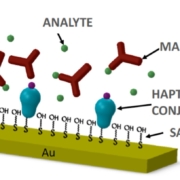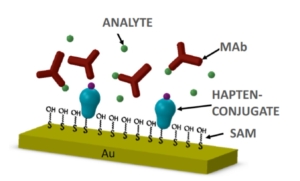Tracking Recovery Technology Note
September 15th 2020: AWSensors is pleased to invite you to take a look to its new Technology Note entitled “Tracking Recovery Technology Note”.
Summary of the Note
Use of the AWSensors X1 Instrument Tracking Recover feature to monitor overtones frequency and dissipation shifts of air-to-liquid medium exchanges onto 5 MHz QCM sensors.
![]()
Introduction
The Tracking Recovery feature included in AWSensors X1 platform allows the user to monitor large and fast frequency shifts in QCM (Quartz Crystal Microbalance) admittance spectrum. These sudden modifications in the sensor response are common is some applications where dramatical changes in the viscoelastic properties of the sensor surrounding medium take place.
This technical note illustrates the utility of tracking recovery feature to characterize an air-to-liquid medium exchange. According to Kanazawa and Gordon theory predictions [1], a complex frequency shift is expected in the sensor electromechanical response when the semi-infinite medium placed over the QCM’s top electrode is replaced by other semi-infinite medium. This shift will depend on the viscosity and density properties of the final medium. Following, Kanazawa-Gordon equation is presented for both the frequency (Eq. 1) and the half-bandwidth (Eq. 2) shifts.
Continue reading by downloading the full Technology Note (below) …
Download the Full Technology Note
You can download the full Note in pdf format through this link. A list of our Technology Notes can be found on our Technology Web Page.




